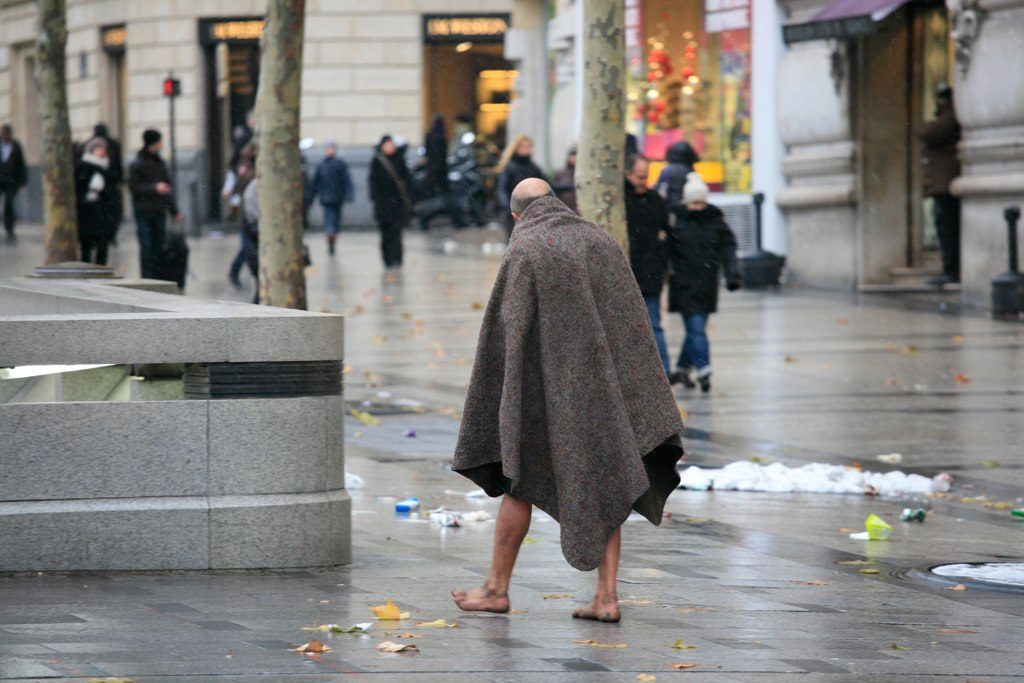Caring for the Crazy
No One Cares About Crazy People is a tragic book. Written by Pulitzer Prize-winning critic Ron Powers, it is part memoir, part condemnation of the ignominious history of mental healthcare in the United States.

Photo Courtesy Wikimedia Commons
What if the next time you fell ill, seriously ill—the kind of illness that floats you between this world and the next—society greeted you not with treatment, but with punishment? Not with sympathy, but with scorn? What if the world around you reacted to your illness by chipping away at your spirit, your health, and your very existence?
This terrifying dystopia is, and has historically been, the reality for millions of mentally ill Americans. They have the misfortune of having diseases that are too out of sight and complex to deserve, apparently, the right to be treated like they are sick. So instead, a disproportionate percentage of them are left to fend for themselves on the streets—where emotional instability, low incomes, and homelessness can be imprisonable offenses. These systemic problems have persisted for decades, leaving the afflicted and their families to question whether anyone cares.
No One Cares About Crazy People is a tragic book. Written by Pulitzer Prize-winning critic Ron Powers, it is part memoir, part condemnation of the ignominious history of mental healthcare in the United States.
As American politicians—particularly President Trump—lambast the disgraceful state of infrastructure in the country, Powers’ book makes it apparent that there are few forms of infrastructure quite as broken or disgraceful as that of our mental healthcare system.
For Jerome Murdough, the brokenness of this system proved fatal. Murdough, a mentally ill homeless veteran, tried to take refuge from the New York City winter in an apartment building in 2014. He was arrested for trespassing, jailed because of his inability to pay bail, and killed because his cell was so hot that he “baked to death.” Powers briefly recounts Murdough’s story in a chapter dedicated to the “murderous mayhem directed at the mentally ill in America by police officers and prison officials.”
According to a 2015 report from the Urban Institute, more than half of all inmates in the United States have some sort of mental illness. Some estimates are even higher, while others are much lower—the disparity of statistics here highlights the challenges, complexities, and failures in diagnosing.
When mentally ill people are imprisoned, they are particularly vulnerable—their erratic behavior can make them irritating too, and therefore a target of, guards or fellow inmates. Such targeting, even when not overtly violent, can have a devastating impact. Powers explains: “Solitary confinement, even for brief periods—several days, say, with an hour’s respite each day—is known to trigger hallucinations and paranoia among sane and insane prisoners alike. For people already mad, it is a quick route to deep and lasting psychosis.” While this is a well-known and widely discussed issue, it persists, which makes its reiteration in the book useful.
According to the US Department of Justice, up to 4.4% of state and federal prisoners are held in solitary confinement on an average day, which translates to roughly 67,000 people. And according to the same DOJ survey, nearly half of the inmates who reported spending time in solitary had at least some sort of “indicator of past mental health problems.”
Still, the majority of mentally ill prisoners do not spend time in solitary confinement—a fact which should offer little reprieve. Estimates suggest that more than 200,000 individuals with serious mental illnesses are in state and federal prisons—that’s compared to the roughly 35,000 individuals with serious mental illnesses in state hospitals.
Powers dedicates a significant portion of the book to the historical events that have contributed to this trend. “Deinstitutionalization,” he writes, “uprooted what meager stability insane people clung to—the dismal care of state mental asylums—and drove tens of thousands into the streets, where they pioneered an entirely new urban subpopulation, the accursed demographic of the mad that we call the homeless.” According to the US Department of Housing and Urban Development, 26 percent of sheltered homeless individuals have a serious mental illness—a figure which notably excludes the unsheltered and those with mental illness not deemed “serious.”
The deinstitutionalization debate is intertwined with another set of questions at the core of American modernity—those related to the importance of individual civil liberties, and what the maximum acceptable price for them may be. For Powers, this is a deeply personal debate.
In the moving chapters dedicated to the memoir, Powers describes what it was like to be the father of two bright, creative young boys who became two bright, creative, schizophrenic young men: The youngest of whom would succumb to the darkest of internal voices just before his 21st birthday.
When Powers’ second son, Kevin, became an adult, he gained the ability to make his own healthcare decisions. Which, for him included the decision to go off his antipsychotic medication. Kevin’s schizophrenia included a common, but “cruel joke” of a symptom—anosognosia, which means that the sufferer is in total denial of his illness. But US law prohibits anyone—even someone with anosognosia—from being forced to take medication, at least until he becomes an “imminent threat” to himself or others. Powers writes, “The only choice, a ghastly one, was to let our son “crash” again and hope that he would learn a lesson from it.”
US law didn’t always prohibit the forcible treatment of the mentally ill—in fact, it enthusiastically condoned it for a part of the early twentieth century. The eugenics movement, to which Powers dedicates a chapter, saw the forced sterilization of tens of thousands of American women who were accused of being “feebleminded” (which, loosely, meant that a woman was mentally ill, had powerful enemies, was poor, or was not white).
But by the mid-1900s, public opinion began to swing in the other direction. An intellectual re-emphasis on civil liberties, coupled with the discovery of antipsychotics thought to be “miracle drugs,” and the simultaneous denial of the very existence of mental illness by some influential figures (including Church of Scientology founder L. Ron Hubbard) meant that in 1975, the Supreme Court ruled against involuntary hospitalization and treatment. By the 1980s, as federal funding to mental institutions shrank and weakened, asylums were forced shut and their patients forced out—and too often, ended up in the streets or in prison. The term “transinstitutionalization” has gained traction to describe this phenomenon—patients weren’t removed from institutions, they were just moved to different ones.
Powers interweaves memoir and history in alternating chapters to provide an intimate, convincing, and heartbreaking case that not enough of us care about crazy people. To readers knowledgeable about the subject, the historical chapters may not offer much that is new, but to everyone else, they are a vital overview. Powers’ only shortcoming was his failure to explore possible solutions—more time devoted to the discussion of any successful, or at least better, mental healthcare models from around the world would have been a welcome addition. Still, he manages to galvanize his audience.
In the book’s preface, Powers writes, “I hope you do not “enjoy” this book. I hope you are wounded by it; wounded as I have been writing it. Wounded to act, wounded to intervene.” It’s difficult to imagine how one could emerge from it unscathed.
Ayenat Mersie is a freelance journalist who writes mostly about Africa, agriculture, and politics. She is currently pursuing a degree in journalism and international relations at NYU. Before moving to New York, she worked at an agricultural data startup in Nairobi, interned at the UN in Addis Ababa, and studied politics at Princeton.






